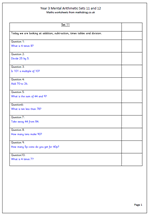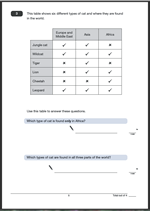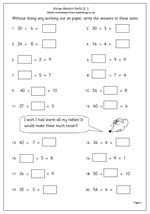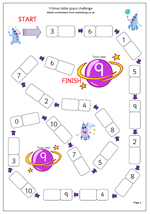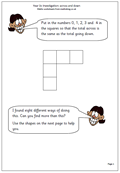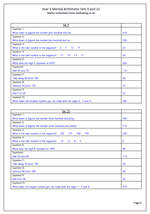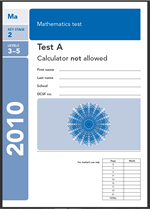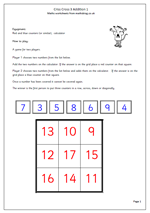 Probability, or chance, is one of the more misunderstood areas of maths and one which has only crept into the Primary curriculum in the last 20 years or so. It brings with it a whole new set of vocabulary and concepts which are very precise in their meaning.
Probability, or chance, is one of the more misunderstood areas of maths and one which has only crept into the Primary curriculum in the last 20 years or so. It brings with it a whole new set of vocabulary and concepts which are very precise in their meaning.
By the end of year 5 children should have come across the following terms:
perhaps, might, fair, unfair, likely, unlikely, equally likely, chance, certain, uncertain, probable, possible, impossible, good chance, poor chance, no chance, equal chance, even chance, evens, fifty-fifty chance, likelihood, probability, possibility.
The first two worksheets I have published look at events which are impossible (such as my talking to Henry V111 this evening), unlikely (such as throwing a die and getting a 1), likely (such as waking up tomorrow) or certain (such as throwing a normal die and getting a number from 1 to 6). Finding events which are either certain or impossible are often much harder than you might think.
The second pair of worksheets look at events that have an even chance of happening (such as tossing a coin and getting a head). However, care has to be taken to understand that, if there are two possibilities, they are not necessarily equally likely. For example, there are two possibilities – I might buy a new Rolls Royce today or I might not. Unfortunately, these two events are not equally likely. Another example of this is I choose a number between 1 and 5. Is the number I choose a prime number? As there are three prime numbers between 1 and 5 (2, 3 and 5) and two numbers that are not, there is not an even chance that I will choose a prime number.
Sometimes further investigations have to be carried out before a probability question can be answered. Take the possibility of a factor of 16 being even. Probably the best way of doing this is to first find all the factors of 16, group them into even or odd and then work out the probability.
Go to Year 5 probability worksheets
 Whilst this worksheet appears to be very simple it is surprising how many children get into a bit of a muddle with such activities. A table is shown with a rule for completing it, such as ‘Add 34’. All that has to be done is complete the missing cells of the table following the rule. If the second (OUT) number has to be found then it is a straightforward matter of using the rule. If the first (IN) number has to be found then the rule has to be reversed: it becomes clear as you do the worksheet!
Whilst this worksheet appears to be very simple it is surprising how many children get into a bit of a muddle with such activities. A table is shown with a rule for completing it, such as ‘Add 34’. All that has to be done is complete the missing cells of the table following the rule. If the second (OUT) number has to be found then it is a straightforward matter of using the rule. If the first (IN) number has to be found then the rule has to be reversed: it becomes clear as you do the worksheet!